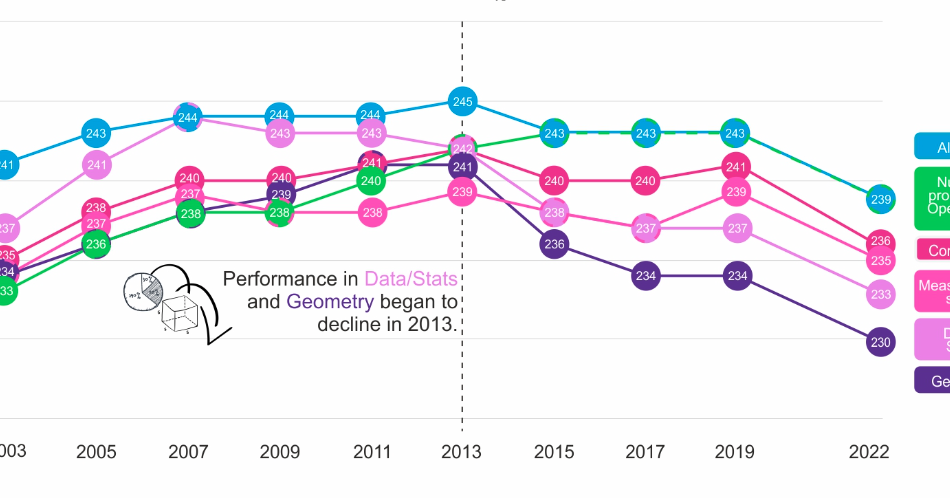
U.S. students’ math performance has been a cause for concern over the past two decades. This article delves into the state of math education in America by examining composite scores in math from 2003 to 2022, as well as the performance of students in grades 4, 8, and 12 across various math topics during this period. Despite some bright spots, the data paints a picture of declining math proficiency in the nation’s schools.
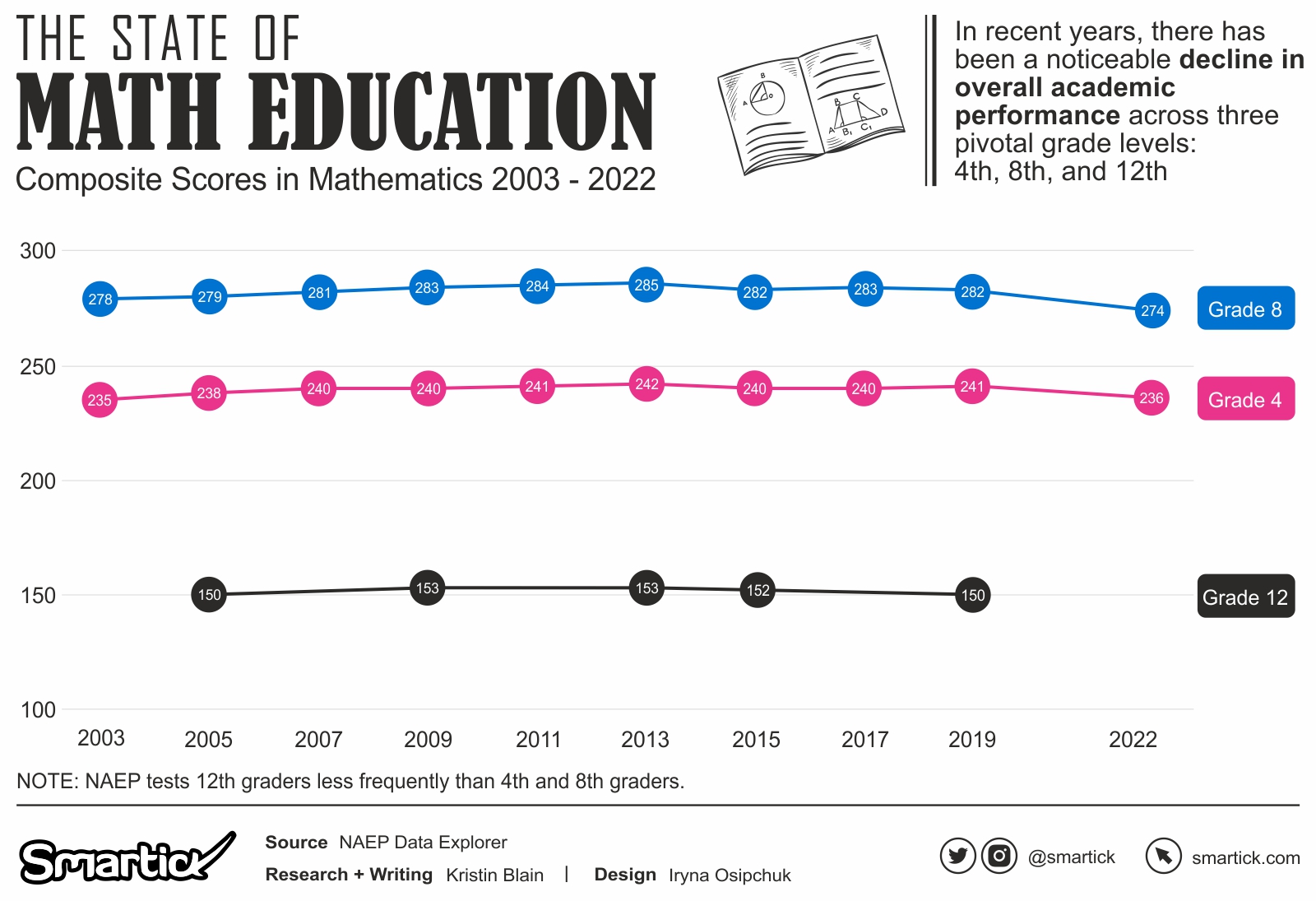
The data reveals that math performance among American students has been fluctuating but generally declining:
- 4th-grade scores saw a slight dip from 2003 to 2013, followed by a small increase until 2019, and a decline in 2022. This suggests that while there have been improvements, there is a need for sustained progress.
- 8th graders experienced a more consistent decline from 2013 to 2022, with a steep drop during the pandemic in 2020. This alarming trend signals a pressing need for intervention and improvement in math education at this level.
- Unfortunately, the available data for 12th graders is limited, but it indicates a downward trend. The incomplete data underscores the importance of monitoring and addressing math proficiency at the high school level.
Grade 4 Scores in Mathematics (2003-2022)
Now, let’s focus on the performance of 4th graders across specific math topics from 2003 to 2022:
- Algebra, data/stats, and measurement scale scores remained relatively stable over the years. This stability suggests that foundational math concepts are being taught consistently at this level.
- Geometry and number properties/operations scores displayed a downward trend, with geometry taking a more pronounced hit. This indicates a need for increased focus on geometry instruction and a deeper understanding of number properties.
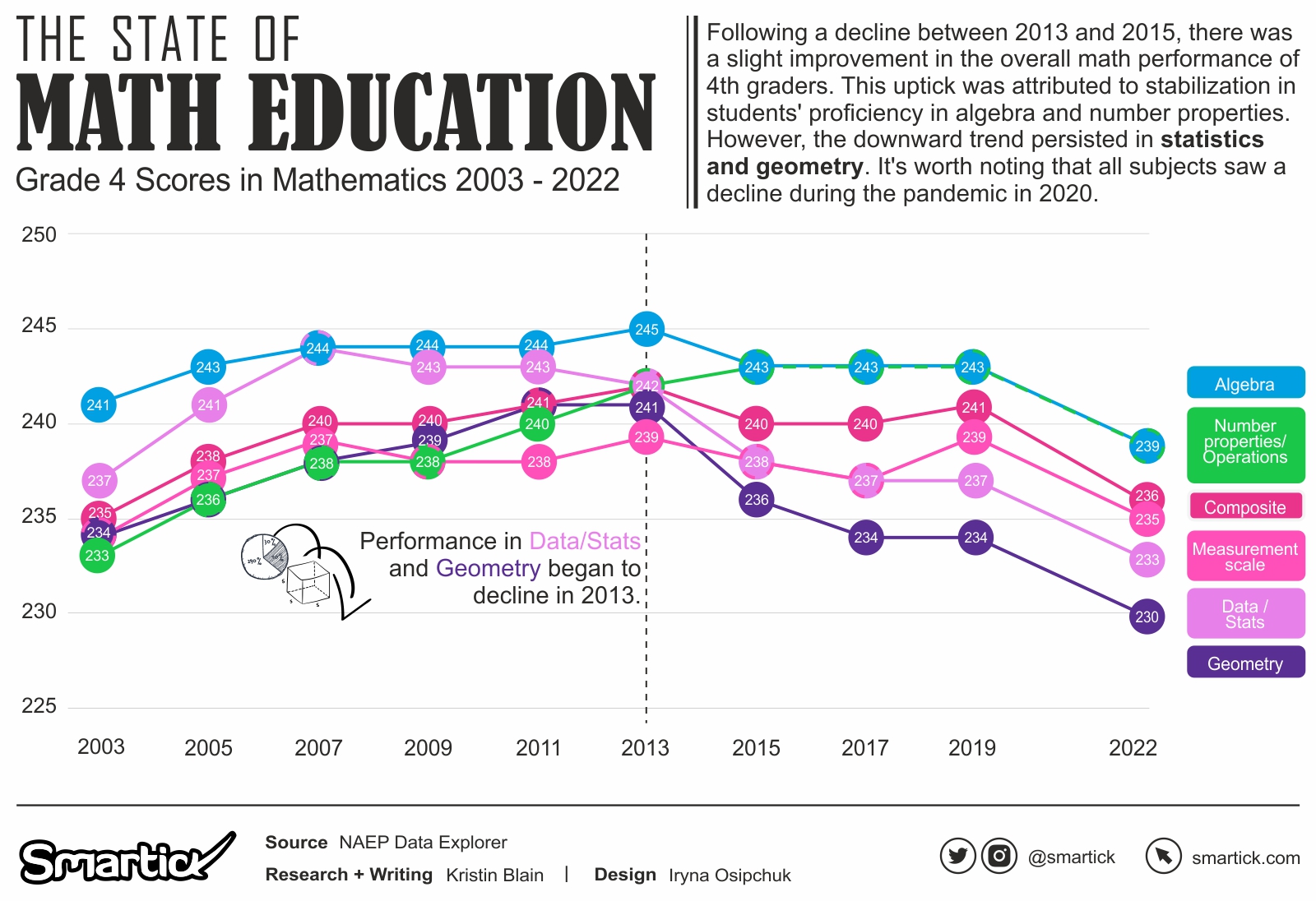
While 4th graders’ overall math performance saw some fluctuations, algebra and number properties/operations leveled off after a dip from 2013 to 2015. However, performance in statistics and geometry continued to decline steadily. All subjects suffered during the pandemic in 2020, highlighting the challenges students faced.
Grade 8 Scores in Mathematics (2003-2022)
Shifting to 8th graders, their performance across specific math topics reveals a similar pattern:
- Algebra, data/stats, and measurement scale scores remained relatively consistent. The stability in these areas indicates a solid foundation in these mathematical concepts.
- Geometry and number properties/operations scores showed a steady decline, with a significant drop during the pandemic in 2020. This consistent decline highlights the pressing need for targeted improvements in geometry and number operations education for 8th graders.
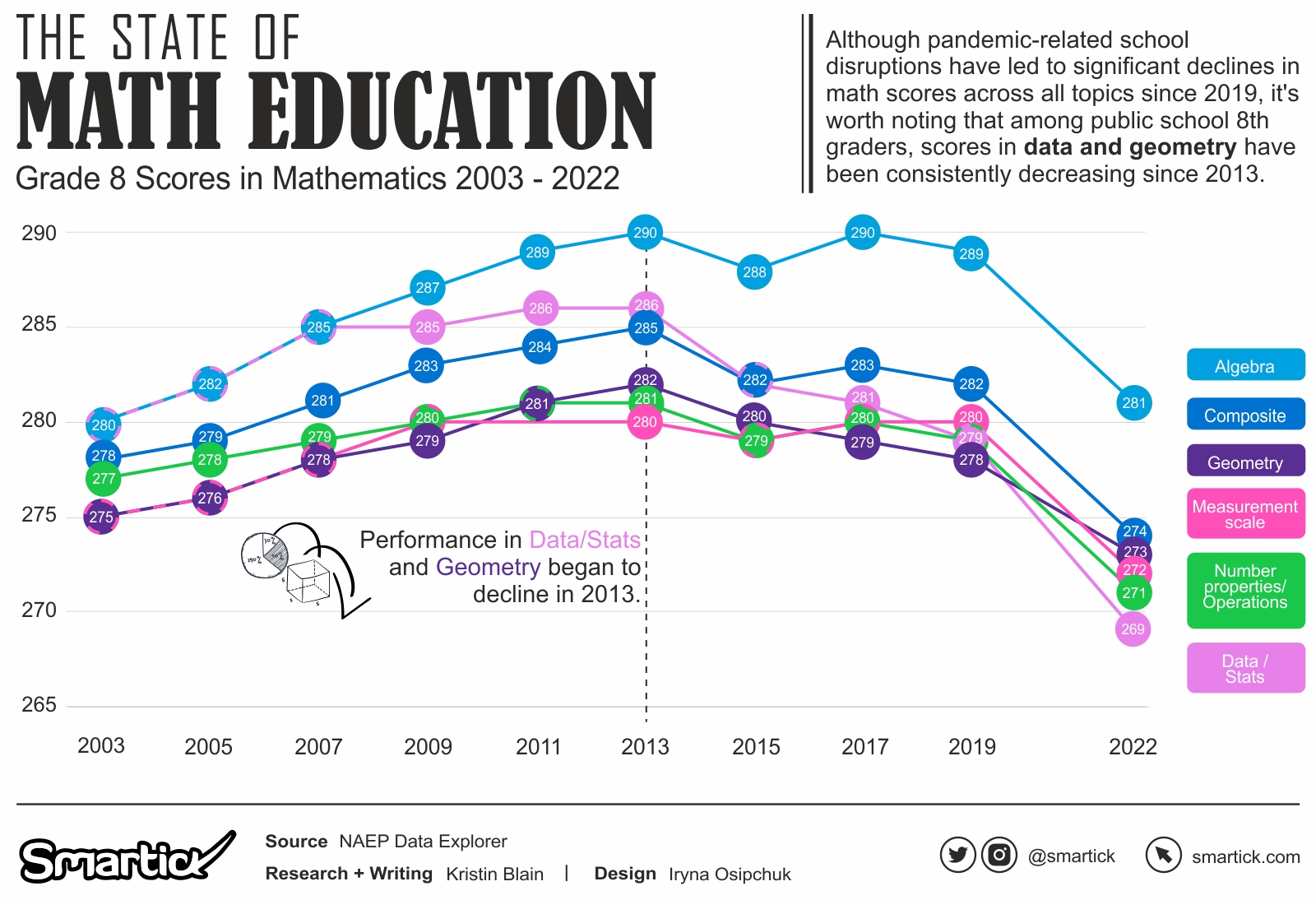
Since 2013, 8th graders’ scores in data and geometry have been consistently declining, with the pandemic exacerbating this trend. This suggests that these specific math topics are posing significant challenges for students at this level, and interventions are necessary to reverse this decline.
Grade 12 Scores in Mathematics (2003-2022)
Looking at 12th graders’ math performance, we have limited data available:
- Algebra scores have remained relatively stable since 2015. This stability indicates that algebra instruction in high school has been consistent.
- Data/stats, measurement and geometry, and number properties/operations scores have fluctuated, with no clear trend due to incomplete data. The incomplete data emphasizes the need for comprehensive data collection and analysis to understand the challenges faced by 12th-grade students.
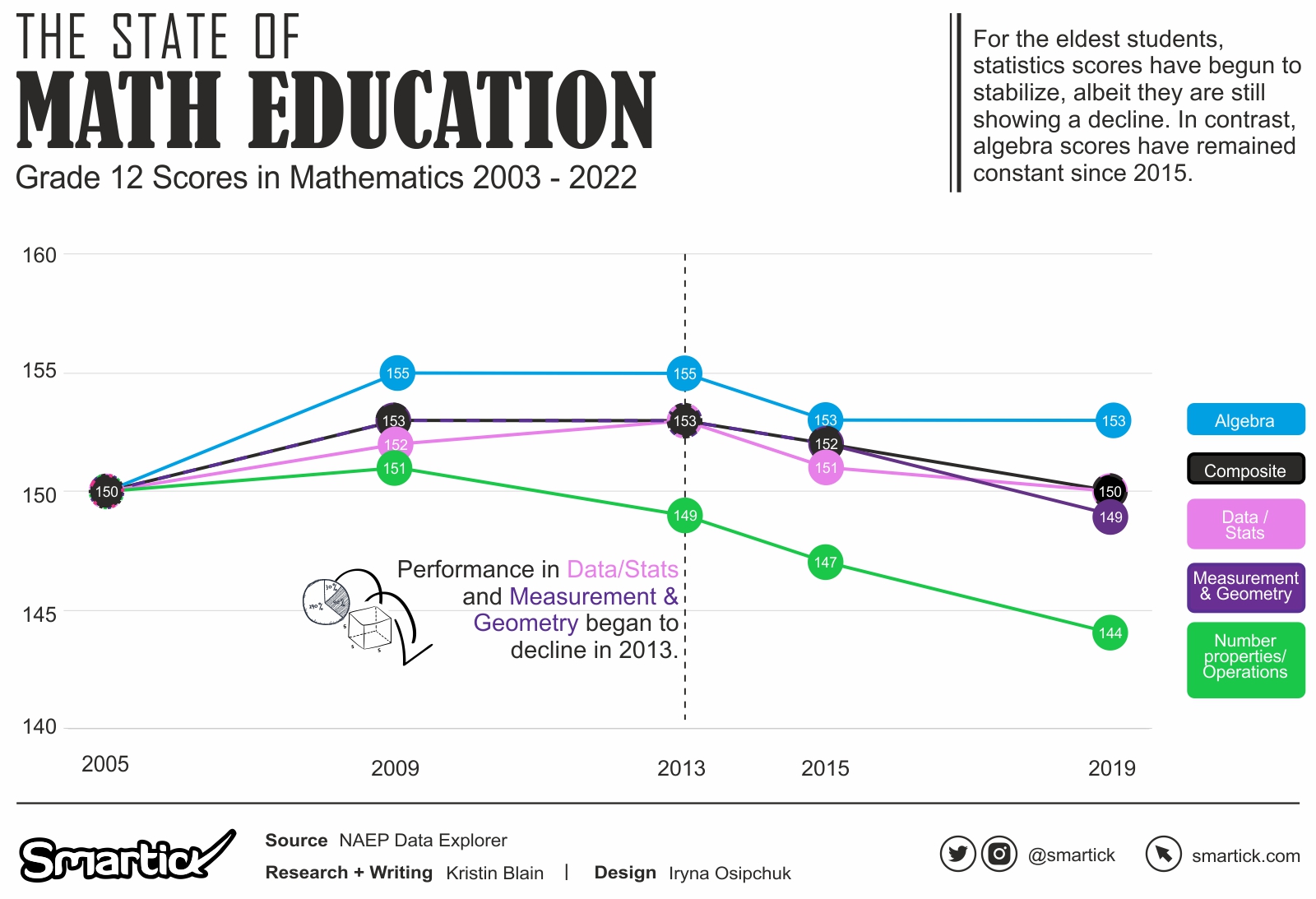
Among the oldest students, statistics scores have shown signs of flattening, though they remain in decline. Algebra, on the other hand, has held steady since 2015. This suggests that while algebra education has remained consistent, there are opportunities to strengthen statistics education for 12th graders.
In conclusion, the state of math education in America is cause for concern. While composite scores may not show the full picture, a closer examination of specific math topics reveals persistent challenges. Performance in geometry and statistics has consistently declined, and the pandemic has exacerbated these issues. Momentum for change is building, with an emphasis on integrating statistics and data science into the curriculum. It is crucial to address these challenges to ensure that American students are equipped with the math skills they need for the future.

